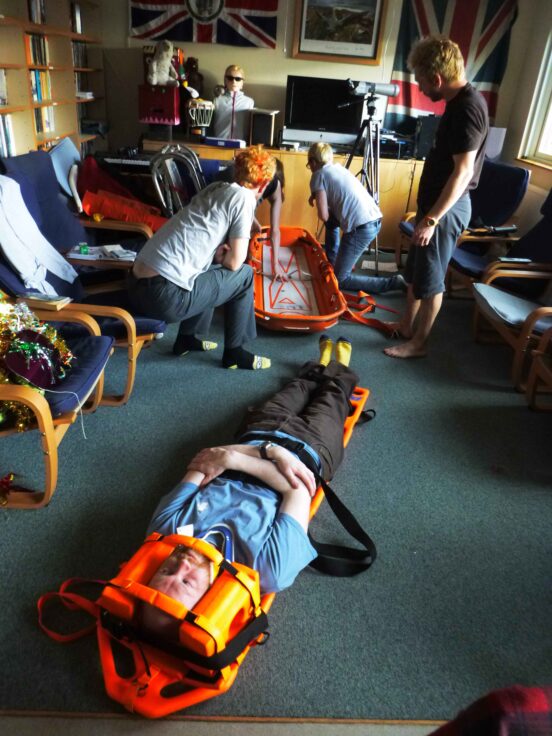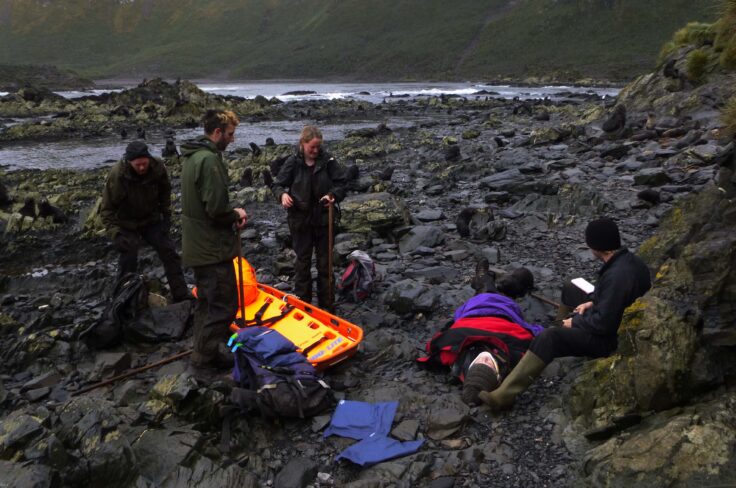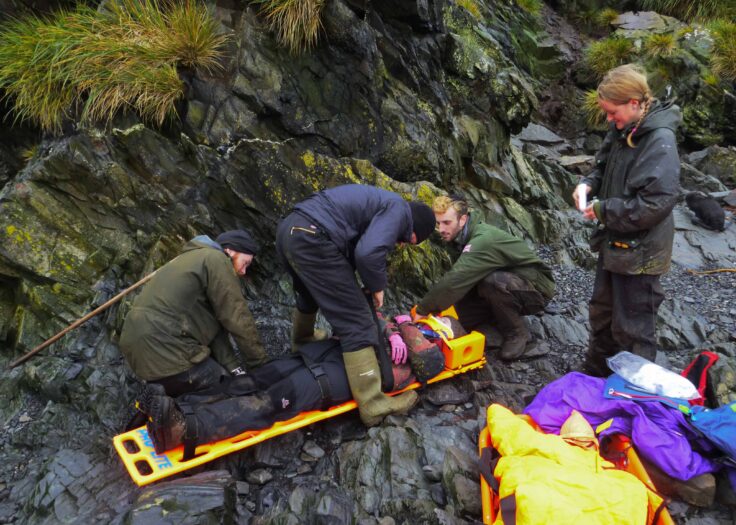Search and Rescue on Bird Island
23 February, 2016 Bird Island
Bird Island Research Station has a small staff team; no more than 10 in summer and just four over winter. We have no doctor on station though all staff receives excellent pre-deployment first aid training from the BAS Medical Unit, with one or two individuals spending a few days on the front line in an A&E department to broaden their experience.
However well skills are taught they can be quickly forgotten so we try and have a training session once a week, on an otherwise quiet evening, where we go over some aspect of rescue, recovery or medical skills. One week it could be a discussion about hypothermia, then practicing putting a stretcher together, then CPR practice with our own dummy.

Earlier in the season we sat around the table and had a serious discussion about what we would do if someone severely injured themselves in the field. Bird Island has some steep, slippery terrain and people frequently work alone. The importance of regular radio contact is hammered home, as is the necessity of always carrying spare warm clothing and an emergency aid kit. During our table-top exercise I sat down with the Emergency Action Plan and talked through the extremely useful flow chart it contains, detailing priority actions and who to contact.
With field-work calming down a bit in the last few weeks I have been on the look-out for a good occasion to put this formally into practice. So last Friday everyone was told to be available for the afternoon, while one of the departing staff went round the beach and lay at an awkward angle at the base of a cliff. I was able to sit back and observe the response and was pleased at the calm, organised and efficient way at which those on station, particularly the upcoming winter team, dealt with the incident. A fast search party took the emergency medical bags and warm clothing and quickly located the casualty, reporting back enough detail for a second party to head out with stretcher, spinal board and other necessary equipment. On station we had someone consulting the doctor at King Edward Point and talking to Cambridge, relaying important information to those in the field.

Despite apparently serious injuries our casualty was soon back indoors, after a short stretcher ride to demonstrate how tiring it can be for those struggling along the uneven terrain. Around a cup of tea we debriefed and reviewed the incident, with everyone happy and more confident in their abilities to respond to any problems, but also more aware of how difficult it can be and how self-aware they need to be in any situation.
